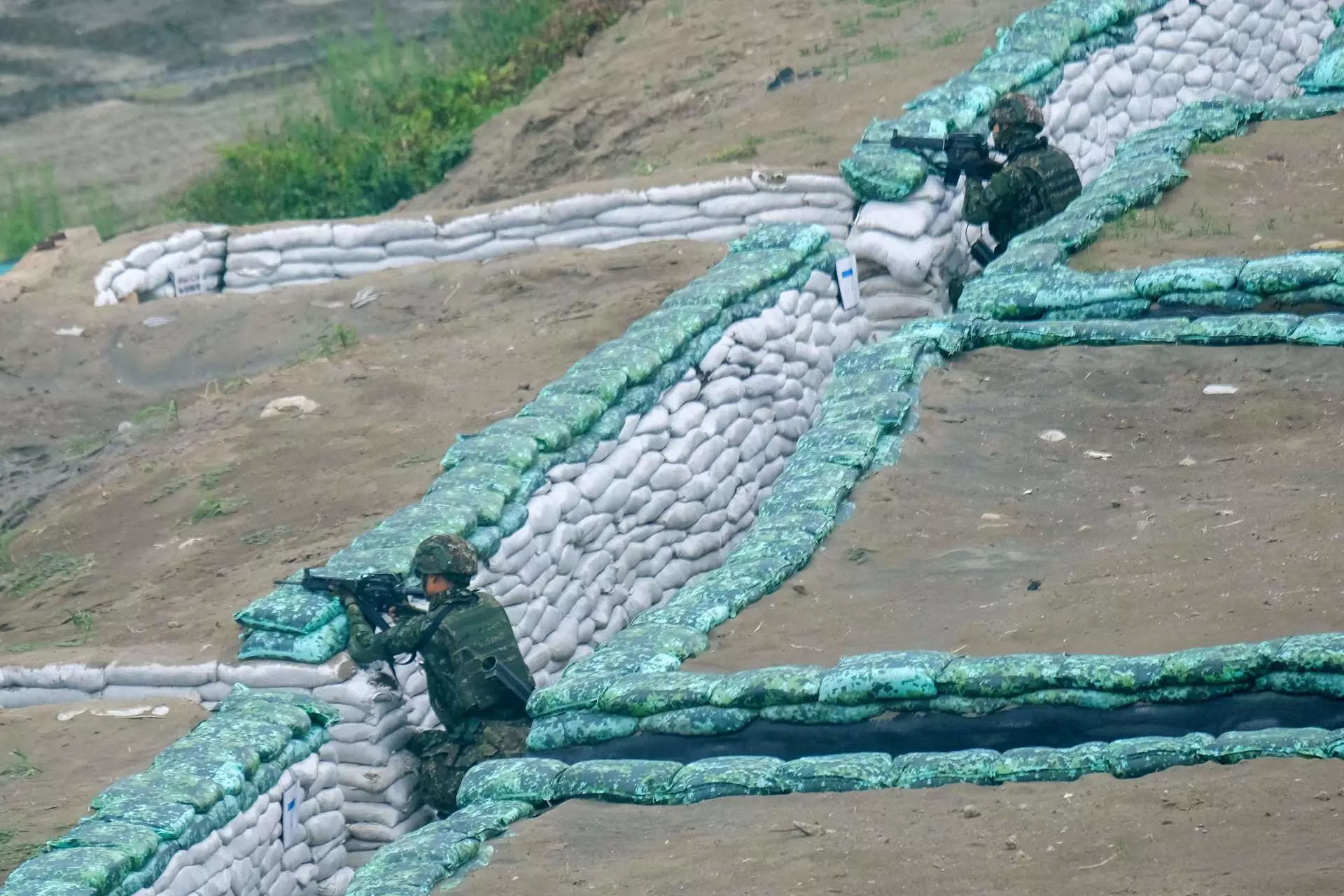
[ad_1]
Taiwan plans to increase its military spending next year by the smallest percentage since 2018, even as Beijing ramps up its military pressure on the self-ruled island it considers its territory.
The government in Taipei will raise its total defense spending to a record high of NT$606.8 billion ($19 billion), accounting for about 2.5% of GDP, according to a statement from the Presidential Office on Monday. That would represent a rise of about 4.6% on the government’s spending plans for 2023 — a significant drop-off from this year’s annual 12.5% increase.
“Taiwan must continue to strengthen self-defense capabilities, demonstrate its determination of self-defense, ensure national security and interests, and strive for more international support,” President Tsai Ing-wen said in the statement.
The deceleration in defense spending comes as Taiwan faces increased pressure to fend off daily Chinese incursions across the median line of the Taiwan Strait, a tacit barrier that has separated the two rivals for decades.
China conducted a series of joint navy and air force exercises over the weekend, in protest against Vice President Lai Ching-te transit through the US en route to Paraguay, where he met with American officials. China’s military said the drills were intended as a warning to what it deems to be Taiwanese “separatist forces.”
Taiwan’s economy also clocked a decline in export orders declined for an 11th straight month in July, as the global slump in consumer demand impacts high-tech chips. The island’s largest company, Taiwan Semiconductor Manufacturing Co., surprised investors last month by cutting its annual revenue outlook, projecting a 10% fall in sales this year.
Taiwan’s Defense Ministry said it detected 45 People’s Liberation Army aircraft around Taiwan on Saturday and into the early hours of Sunday morning — 27 of which crossed the median line and entered Taiwan’s southwest ADIZ. Nine Chinese naval vessels also took part in the excursions, it said.
Taiwan aims to complete its upgrade of 141 F-16 fighter jets by end of the year, according to Monday’s statement, with the first domestically built submarine prototype expected to begin sea trials next month.
The government in Taipei will raise its total defense spending to a record high of NT$606.8 billion ($19 billion), accounting for about 2.5% of GDP, according to a statement from the Presidential Office on Monday. That would represent a rise of about 4.6% on the government’s spending plans for 2023 — a significant drop-off from this year’s annual 12.5% increase.
“Taiwan must continue to strengthen self-defense capabilities, demonstrate its determination of self-defense, ensure national security and interests, and strive for more international support,” President Tsai Ing-wen said in the statement.
The deceleration in defense spending comes as Taiwan faces increased pressure to fend off daily Chinese incursions across the median line of the Taiwan Strait, a tacit barrier that has separated the two rivals for decades.
China conducted a series of joint navy and air force exercises over the weekend, in protest against Vice President Lai Ching-te transit through the US en route to Paraguay, where he met with American officials. China’s military said the drills were intended as a warning to what it deems to be Taiwanese “separatist forces.”
Taiwan’s economy also clocked a decline in export orders declined for an 11th straight month in July, as the global slump in consumer demand impacts high-tech chips. The island’s largest company, Taiwan Semiconductor Manufacturing Co., surprised investors last month by cutting its annual revenue outlook, projecting a 10% fall in sales this year.
Taiwan’s Defense Ministry said it detected 45 People’s Liberation Army aircraft around Taiwan on Saturday and into the early hours of Sunday morning — 27 of which crossed the median line and entered Taiwan’s southwest ADIZ. Nine Chinese naval vessels also took part in the excursions, it said.
Taiwan aims to complete its upgrade of 141 F-16 fighter jets by end of the year, according to Monday’s statement, with the first domestically built submarine prototype expected to begin sea trials next month.
[ad_2]
Source link
